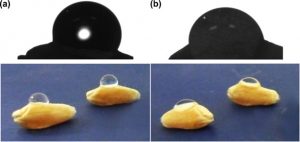The first cultivation of wheat occurred about 10 000 years ago, as a part of the Neolithic Revolution, which saw a transition with human societies from a hunter‐gatherer lifestyle to dependence on agricultural production.
Since then, wheat has been the basic staple food of societies globally. With over 700 million tonnes harvested annually, wheat is one of the most important crops in the world, used both for human food and livestock feed.
The nutritional value of wheat is due to its high content of proteins and carbohydrates, as well as considerable proportions of vitamins (thiamine and vitamin‐B) and minerals (zinc, iron).
A gradual but consistent increase in global wheat consumption is largely driven by population growth and rising household income in developing and emerging economies. It is predicted that if the demand growth rate remains constant, global wheat consumption will surpass 880 million metric tonnes by 2050.
Therefore, it is necessary to improve crop production techniques and enhance the germination of wheat seed. Several techniques have been evaluated for the potential germination improvement of wheat, including ultrasound treatment, magnetic fields, irradiation, and cold plasma technology.
Recent evidence indicates that cold plasma treatment of seeds can enhance their germination as well as seedling growth. The effectiveness of the treatment has been shown to be dependent of the type of seed, their condition, as well as environmental factors, including climate, soil conditions, and water availability.
Seed germination improvement by cold plasma technology is not only beneficial for agriculture applications, but also in the food processing sector with the malting, brewing, weaning foods, and specialty flours industries relying on germination as a major operation. Technologies which can enhance germination could significantly reduce energy usage, thereby contributing toward sustainability in food.

Droplets of water deposited on wheat seed: a) untreated and b) ACP‐treated directly for 180 s (without post‐treatment retention time)
A team of Irish scientists recently provided more insights into the enhancement of seeds germination and seedling growth of wheat by cold plasma technology.
Their study indicates that short plasma treatments (30–60 s) can significantly improve germination properties of the wheat seeds and the growth parameters of the seedlings. These effects are a function of the mode of plasma exposure as well as post‐treatment retention time in a contained reactor.
“The results indicate that cold plasma has potential as an effective alternative to traditional pre‐sowing seed treatments used in agriculture for germination enhancement” according to team member Paula Bourke.

















